Queen Máxima of the Netherlands
Queen Máxima of The Netherlands (born Máxima Zorreguieta Cerruti;[lower-alpha 1] 17 May 1971) is the spouse of King Willem-Alexander. On 30 April 2013, she became the first queen consort of the Netherlands since Emma of Waldeck and Pyrmont (queen consort from 1879 to 1890) and the first Argentine-born queen consort in the history of the Netherlands.
| Máxima | |
|---|---|
 Official portrait photo, 2015 | |
| Queen consort of the Netherlands | |
| Tenure | 30 April 2013 – present |
| Born | Máxima Zorreguieta Cerruti 17 May 1971 Buenos Aires, Argentina |
| Spouse | |
| Issue | |
| Father | Jorge Zorreguieta |
| Mother | María del Carmen Cerruti Carricart |
| Religion | Roman Catholic |
 |
|
| * Member of the Dutch royal house |
Early life and education

Máxima Zorreguieta Cerruti was born in Buenos Aires, Argentina, on 17 May 1971. She is the daughter of Jorge Zorreguieta (1928–2017), who served as Secretary of Agriculture under General Jorge Rafael Videla during Argentina's last civil-military dictatorship (1976–1983), and his second wife, María del Carmen Cerruti Carricart (born 1944). She has two brothers, a sister (deceased), and three half-sisters by her father's first wife, Marta López Gil.[1][2] She is named after her paternal great-grandmother Máxima Bonorino González (1874–1965). Her father was a scion of the Zorreguieta family who had been landed gentry, professionals, regional politicians, and statesmen for generations. Her maternal great-grandfather was also from the landed gentry; Domingo Carricart Etchart (1885-1953) was a landowner, politician, Director of the Banco Provincial de Buenos Aires, first mayor of González Chaves, and mayor of Tres Arroyos.[3]
She grew up in the Recoleta neighbourhood of Buenos Aires city, and studied at Northlands School, a bilingual school of the city of Olivos. She graduated with a degree in Economics from the Pontifical Catholic University of Argentina (UCA) in 1995. This private university is governed by a directory of local bishops, including the current Pope Francis, then Archbishop of Buenos Aires and Grand Chancellor of UCA. During her student years, Francis presided over the traditional Mass at the beginning of classes. She later completed her studies with a Master's degree in the United States.[4]
From 1989 to 1990, while still in college, she worked for Mercado Abierto Electrónico S.A. From 1992 to 1995, she worked in the sales department of Boston Securities SA in Buenos Aires, where she conducted research on software for financial markets. From July 1996 to February 1998, she worked for HSBC James Capel Inc. in New York City, where she became vice president of institutional sales for Latin America. From then until July 1999, she was vice president of the emerging markets division of Dresdner Kleinwort Benson in New York. From May 2000 to March 2001 she worked for Deutsche Bank in Brussels.[5] She also worked as a teacher of English to children and adults, and of mathematics for high-school students and freshmen.[6]
Relationship with Willem-Alexander

Máxima met Willem-Alexander in April 1999 in Seville, Spain, during the Seville Spring Fair. In an interview, they stated that he introduced himself only as "Alexander", so that she did not know he was a prince. She thought he was joking when he later told her that he was not only a prince, but the Prince of Orange and heir apparent to the Dutch throne. They agreed to meet again two weeks later in New York, where Máxima was working for Dresdner Kleinwort Benson. Their relationship apparently began in New York, but she did not meet his parents, Queen Beatrix and Prince Claus, for some time.[7]
The news of the couple's relationship and eventual marriage plans caused controversy in the Netherlands, due to the involvement of Máxima's father Jorge Zorreguieta as a cabinet minister during the National Reorganization Process, the most recent Argentinian dictatorship. Her father's tenure as a minister took place during the beginning stages of the Dirty War, a period of repression that saw about 30,000 people killed or disappeared during the seven-year military regime. At the request of the States General, Michiel Baud, a Dutch professor in Latin American studies, carried out an inquiry into the involvement of Zorreguieta in the Dirty War (roughly, 1974–83). Zorreguieta claimed that, as a civilian, he was unaware of the Dirty War while he was a cabinet minister. Baud determined that Máxima's father had not been directly involved in any of the numerous atrocities that took place during that period. However, Baud also concluded that Zorreguieta was almost certainly aware of them; in Baud's view, it was highly unlikely that a cabinet minister would not have known about them.[8] Even so, his possible presence at the royal wedding was debated for several months.[9]
Marriage and family
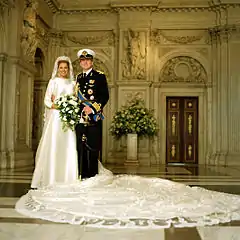

The couple announced their engagement on 30 March 2001; Máxima addressed the nation in Dutch (which at the time she only spoke to basic conversational extent) during the live televised broadcast.[10] Máxima was granted Dutch citizenship by a royal decree on 17 May 2001 and now has dual citizenship: Argentine and Dutch.[11] The engagement was formally approved by the States General later that year—a necessary step for Willem-Alexander to remain in line to the throne.[12]
Máxima and Willem-Alexander married on 2 February 2002 in a civil ceremony in the Beurs van Berlage, Amsterdam, which was then followed by a religious ceremony at Amsterdam's Nieuwe Kerk ("New Church").[13][14] The couple has three daughters: The Princess of Orange, Princess Alexia, and Princess Ariane.
Máxima's parents were not present at the wedding; her father was told he could not attend due to his role as a cabinet minister during the National Reorganization Process, and her mother chose not to attend without her husband.[15][16]
Activities


Queen Máxima has a particular concern for the integration of immigrants into Dutch culture. She was a member of a special parliamentary commission which sought to recommend ways to increase the participation of female immigrants in the workforce. Máxima stresses the importance for immigrants of learning the Dutch language (as she did) in order to fully participate in Dutch society. Dutch is the Queen's third language; she is also fluent in Spanish (her native language) and English. She speaks French to a conversational level.
She participates in conferences around the world representing the Netherlands. She was granted a seat in the Dutch Council of State on 20 October 2004,[17] the highest advisory body and court of administration. She was a member of the Committee for Ethnic Minority Women's Participation from July 2003 until 2005. She has a seat on the board of governors of the Chair on the Management of Diversity and Integration at the Vrije Universiteit Amsterdam; she (along with her husband) is a patron of the Orange Fund (established to promote social welfare and cohesion in the Netherlands); and she also chairs the Board of Trustees of the Prince Claus Chair in Development and Equity of the International Institute of Social Studies[18] and the University of Utrecht.[19]
Máxima is one of the few members of royal families anywhere in the world to be an open supporter of gay rights, and was the first member of a royal family to attend an LGBT rights conference, having attended a conference concerned with LGBT rights on 5 March 2008.[20][21]
Queen Máxima has been honorary chair of the Money Wise Platform since 2010. In this capacity, the Queen focuses attention on the importance of financial education and managing money sensibly, especially where children and young people are concerned. The Queen acts as special advisor to the Platform and consults with interested parties on ways of increasing people's financial awareness and resilience.[22]
Since 10 June 2015, Queen Máxima has been the honorary chair of the Ambassadors for Music at School Platform. Queen Máxima has for some years been committed to giving as many children as possible the opportunity to create music.[22]
Queen Máxima is a member of the Committee for Enterprise and Finance, which succeeded the Microfinance Council in 2011. The Queen is committed to extending the reach of various financing opportunities, both through coaching and by providing credit for new and existing small businesses in the Netherlands. She also works to increase the number of women entrepreneurs and the scope they have to expand their businesses.[22]
Controversy over statement on Dutch identity
In 2007, Máxima inadvertently caused a wave of massive criticism when in a speech to the Scientific Council for Government Policy she said that in the seven years that she had been in the Netherlands, she had been unable to find the Dutch identity.[23] Maxima is quoted as having said the following:
... but 'the' Dutch identity? No, I have not found it. The Netherlands is: large windows without curtains so everyone can look in; but also adherence to privacy and coziness. The Netherlands is: one biscuit at tea; but also great hospitality and warmth. The Netherlands is: sobriety, control and pragmatism; but also the experience of intense emotions together. The Netherlands is far too diverse to summarize in one cliché. 'The' Dutchman does not exist. As a consolation I can tell you that 'the' Argentinian also does not exist. I therefore find it very interesting that the title of the report of the Scientific Council for Government Policy is not 'the Dutch identity'. But: Identification with the Netherlands. That leaves room for development and diversity.[lower-alpha 2]
International appointments
.jpg.webp)
Queen Máxima currently serves as the United Nations Secretary-General's Special Advocate for Inclusive Finance for Development (UNSGSA). The UN Secretary-General Ban Ki-Moon designated her to this role in September 2009 in order to raise awareness on the importance of inclusive financial systems for achieving economic and development goals such as poverty alleviation, food security and education. In her work as UNSGSA, the Queen focuses on how formal financial services such as savings, insurance, and credit can prevent people from falling into poverty due to expenditures on healthcare, and people who are not able to protect themselves against rising food prices and poverty because they do not have access to basic savings accounts. The role of the UNSGSA is to foster action by governments, private sector, financial system standard setters, and others towards a more inclusive financial system that works for the poor.[24]
Máxima is also the Honorary Patron of the G20 Global Partnership for Financial Inclusion (GPFI) since June 2011. In this role she works with governments and partners to advance the G20 Action Plan on Financial Inclusion, and the G20 Financial Inclusion Peer Learning Program. Previously, the Queen was a member of the Advisors Group for the United Nations' International Year of Microcredit 2005[25] and until 2009, was a member of UN Advisors Group on Inclusive Financial Sectors.
Titles, honours and arms
By a decree issued on 25 January 2002, upon the solemnization of marriage, Máxima Zorreguieta was granted the titles Princess of the Netherlands and Princess of Orange-Nassau, and the style Royal Highness was formally conferred upon her. She also became "mevrouw van Amsberg" (Mrs. van Amsberg).[26]
Another decree issued on the same day also granted her own personal coat of arms and a personal standard.[27]
On 13 May 2011, the Dutch parliament confirmed that Máxima would become queen consort of the Netherlands upon her husband's accession, after a debate over her future title and style.[28] On 28 January 2013, it was announced that Queen Beatrix would abdicate on 30 April in favour of Willem-Alexander.[29] Máxima is the kingdom's first queen consort since Princess Emma of Waldeck and Pyrmont, the second wife of William III. She is the first Dutch queen to have been born as a commoner, and the first to have been born outside Europe.
Royal titles and styles
- 2 February 2002 – 30 April 2013: Her Royal Highness Princess Máxima of the Netherlands
- Full title: Her Royal Highness Princess Máxima of the Netherlands, Princess of Orange-Nassau, Mrs. van Amsberg[30]
- 30 April 2013 – present: Her Majesty The Queen
- Full title: Her Majesty Queen Maxima, Princess of the Netherlands, Princess of Orange-Nassau[31]
Honours
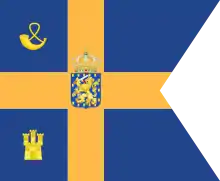
National
 Netherlands:
Netherlands:
 Knight Grand Cross of the Order of the Netherlands Lion
Knight Grand Cross of the Order of the Netherlands Lion Recipient of the Wedding Medal of Prince Willem-Alexander, Prince of Orange and Máxima Zorreguieta
Recipient of the Wedding Medal of Prince Willem-Alexander, Prince of Orange and Máxima Zorreguieta King Willem-Alexander Investiture Medal (30 April 2013)
King Willem-Alexander Investiture Medal (30 April 2013)
Foreign
.svg.png.webp) Belgium:
Belgium:
 Grand Cordon of the Order of Leopold
Grand Cordon of the Order of Leopold Grand Cross of the Order of the Crown
Grand Cross of the Order of the Crown
 Brazil:
Brazil:
 Grand Cross of the Order of the Southern Cross
Grand Cross of the Order of the Southern Cross
 Brunei:
Brunei:
 Member First Class of the Family Order of Laila Utama
Member First Class of the Family Order of Laila Utama
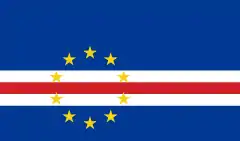 Cape Verde:
Cape Verde:
_Cape_Verde.jpg.webp) First Class of the Medal of Merit
First Class of the Medal of Merit
 Chile:
Chile:
 Grand Cross of the Order of Merit
Grand Cross of the Order of Merit
 Estonia:
Estonia:
 Member First Class of the Order of the Cross of Terra Mariana[32]
Member First Class of the Order of the Cross of Terra Mariana[32]
 Denmark:
Denmark:
 Knight of the Order of the Elephant[33]
Knight of the Order of the Elephant[33]
 France:
France:
 Grand Cross of the Order of National Merit[34]
Grand Cross of the Order of National Merit[34]
 Germany:
Germany:
 Grand Cross 1st class of the Order of Merit of the Federal Republic of Germany
Grand Cross 1st class of the Order of Merit of the Federal Republic of Germany
 Italy:
Italy:
 Knight Grand Cross of the Order of Merit of the Italian Republic[35]
Knight Grand Cross of the Order of Merit of the Italian Republic[35]
 Japan:
Japan:
 Grand Cordon (Paulownia) of the Order of the Precious Crown
Grand Cordon (Paulownia) of the Order of the Precious Crown
 Latvia:
Latvia:
 Commander Grand Cross of the Order of the Three Stars[36]
Commander Grand Cross of the Order of the Three Stars[36]
 Lithuania:
Lithuania:
 Grand Cross of the Order for Merits to Lithuania[37]
Grand Cross of the Order for Merits to Lithuania[37]
 Luxembourg:
Luxembourg:
 Knight of the Order of the Gold Lion of the House of Nassau[38]
Knight of the Order of the Gold Lion of the House of Nassau[38] Grand Cross of the Order of Adolphe of Nassau
Grand Cross of the Order of Adolphe of Nassau
 Mexico:
Mexico:
 Sash of the Order of the Aztec Eagle[39]
Sash of the Order of the Aztec Eagle[39]
 Norway:
Norway:
 Grand Cross of the Order of Saint Olav[40]
Grand Cross of the Order of Saint Olav[40]
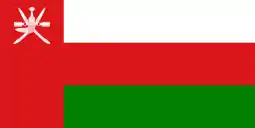 Oman:
Oman:
 Dame Grand Cordon of the Order of Sultan Qaboos
Dame Grand Cordon of the Order of Sultan Qaboos
 Poland:
Poland:
 Grand Cross of the Order of the White Eagle
Grand Cross of the Order of the White Eagle
 Portugal:
Portugal:
 Grand Collar of the Order of Prince Henry[41]
Grand Collar of the Order of Prince Henry[41]
 Spain:
Spain:
 Dame Grand Cross of the Order of Isabella the Catholic[42]
Dame Grand Cross of the Order of Isabella the Catholic[42]
 Sweden:
Sweden:
_-_Commander_Grand_Cross.svg.png.webp) Commander Grand Cross of the Royal Order of the Polar Star
Commander Grand Cross of the Royal Order of the Polar Star
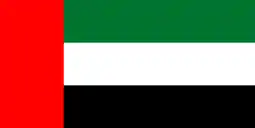 United Arab Emirates:
United Arab Emirates:
 Grand Cross of the Order of Union[43]
Grand Cross of the Order of Union[43]
Arms
 |
|
References
- Reitwiesner, William Addams. "Ancestry of Maxima Zorreguieta". WARGS. Archived from the original on 15 September 2012. Retrieved 28 January 2013.
- Andrea Borella Annuario della Nobiltà Italiana, Edition XXXI Teglio (SO) 2010 S.A.G.I. Casa Editrice, vol. 1 and Ascendencia de Da. Máxima Zorreguieta, Princesa de la Corona de los Paises Bajos Archived 3 May 2013 at the Wayback Machine
- Ancestry of Maxima Zorreguieta Archived 15 September 2012 at Archive.today
- "From Commoner to Queen - The Story of Máxima Zorreguieta". Euro Channel - The Best of Europe. Archived from the original on 9 October 2015. Retrieved 10 November 2015.
After moving to the United States to complete a master's degree
- "Studie en werk vóór 2002". Het Koninklij Huis. Archived from the original on 29 October 2012. Retrieved 28 January 2013.
- "Hats off to birthday girl Queen Máxima of the Netherlands". Hello Magazine. 15 May 2015. Archived from the original on 17 October 2015. Retrieved 9 November 2015.
- "Princess Maxima". Hello magazine. Archived from the original on 21 April 2016. Retrieved 29 April 2016.
- Human rights: Zorreguieta vs.humanrights Archived 19 January 2009 at the Wayback Machine, March 2001.
- "Crown Princess Maxima of the Netherlands". Hello!. Archived from the original on 14 December 2012. Retrieved 28 January 2013.
- Engagement period Archived 22 June 2011 at the Wayback Machine, Royal Wedding 2002.
- Ook Beatrix heeft dubbele nationaliteit Archived 21 August 2014 at the Wayback Machine, (Queen Beatrix also has dual citizenship), Radio Netherlands Worldwide, 6 March 2007.
- Joyful christening of Catharina-Amalia
- Amsterdam Museum toont trouwtafel van Prins Willem-Alexander en Prinses Maxima Archived 15 May 2013 at the Wayback Machine, Royal Wedding 2002.
- Princess Maxima & Prince Willem-Alexander's Wedding: A Look Back Archived 24 May 2013 at the Wayback Machine
- Fox News Archived 9 February 2013 at the Wayback Machine
- Dutch abdication: profile of Maxima Zorreguieta, Holland's new Queen consort Archived 25 July 2013 at the Wayback Machine
- "Prinses Máxima krijgt zitting in Raad van State" (in Dutch). 19 October 2004. Archived from the original on 29 March 2012. Retrieved 14 August 2011.
- Iss.nl Archived 19 December 2013 at the Wayback Machine
- "Queen Maxima at the Utrecht University in Utrecht". Archived from the original on 13 April 2016. Retrieved 29 April 2016.
- FreeForm | Chicago Free Press: Judge Not... Archived 7 May 2009 at the Wayback Machine
- "Landelijke koploperovereenkomst lesbisch". Rijksoverheid. 14 November 2007. Archived from the original on 9 May 2013. Retrieved 28 January 2013.
- "Work and official duties of Queen Máxima of the Netherlands since 2002". Dutch Royal House.
- Speech Máxima on identity Archived 14 February 2012 at the Wayback Machine, NIS, July 17, 2008
- Her Royal Highness Princess Máxima of the Netherlands Archived 8 June 2013 at the Wayback Machine
- "International Year of Microcredit 2005". Year of Microcredit. Archived from the original on 26 November 2012. Retrieved 28 January 2013.
- Decree of 25 January 2002 laying down the titles and styles of Máxima Zorreguieta and titles, names, and styles of the children who might be born from the marriage of His Royal Highness Prince Willem-Alexander Claus George Ferdinand, Prince of Orange, Prince of the Netherlands, Prince of Orange-Nassau, Jonkheer van Amsberg with Her Royal Highness Princess Máxima of the Netherlands, Princess of Orange-Nassau, Mrs van Amsberg Archived 28 September 2013 at the Wayback Machine. Official Gazette of the Kingdom of the Netherlands. No. 41. Published: 31 January 2002
- Decree of 25 January 2002, regarding the coat of arms and personal flag of Her Royal Highness Princess Máxima Archived 13 May 2012 at the Wayback Machine. Official Gazette of the Kingdom of the Netherlands. No. 42. Published: 31 January 2002
- Pinedo, Danielle; Versteegh, Kees (15 February 2013). "Deskundigen in NRC: Máxima kreeg te snel titel 'koningin'". nrc.nl (in Dutch). Archived from the original on 19 September 2016.
- www.koninklijkhuis.nl Archived 1 August 2015 at the Wayback Machine
- https://zoek.officielebekendmakingen.nl/stb-2002-41.html
- "Archived copy". Archived from the original on 22 June 2015. Retrieved 19 June 2015.CS1 maint: archived copy as title (link)
- Estonian Presidency, Estonian State Decorations (Estonian) - Máxima Hollandi kuninganna
- "Modtagere af danske dekorationer". kongehuset.dk (in Danish). Retrieved 29 January 2019.
- Koning krijgt grootkruis van Legioen van Eer Archived 23 January 2014 at the Wayback Machine - website De Telegraaf
- Quirinale website Archived 4 February 2018 at the Wayback Machine
- vestnesis.lv. "Par Triju Zvaigžņu ordeņa piešķiršanu - Latvijas Vēstnesis". www.vestnesis.lv (in Latvian). Retrieved 11 June 2018.
- State visit to Lithuania
- Vanitatis
- Official decree Archived 23 July 2013 at the Wayback Machine, 2 November 2009
- Kongehuset
- Portugal Archived 17 January 2013 at the Wayback Machine
- Boletín Oficial del Estado Archived 4 March 2016 at the Wayback Machine
- H.H Sheikh Khalifa welcomes HM Queen Beatrix of Netherlands Archived 29 April 2013 at the Wayback Machine - website of the UAE Ministry of Foreign Affairs
- (in Dutch) Wapens van leden van het Koninklijk Huis Archived 23 January 2013 at the Wayback Machine, Dutch Royal House. Retrieved on 6 May 2013.
Notes
- Pronunciation in Spanish ([ˈmaksima soreˈɣjeta ˈseruti]) and Dutch ([ˈmɑksimaː]).
- Translated from the Dutch original.
External links
| Wikimedia Commons has media related to Queen Máxima of the Netherlands. |
- Queen Máxima at the website of the Royal House
| Dutch royalty | ||
|---|---|---|
| Vacant Title last held by Claus von Amsbergas prince consort |
Queen consort of the Netherlands 30 April 2013 – present |
Incumbent |